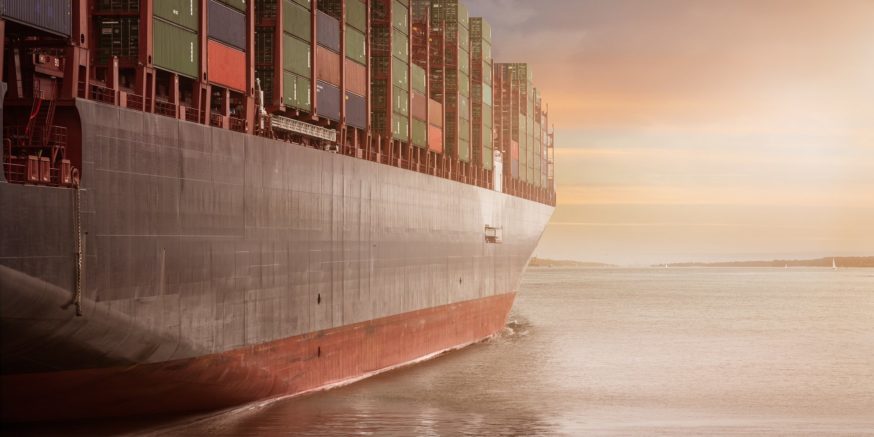Moving information around the world is something we’ve gotten very good at. When you look back even a decade ago, the first iPhone was barely in circulation. Now we’re all addicted to our screens. But, sending data packets around the stratosphere is clearly a lot easier than sending physical objects. Logistics is still a logistical nightmare.
Why Is Logistics Such a Hassle?
Think about the computer you write on, the glass you drink from or the car you drive. There are a zillion factors that come into play before they end up in your possession. Beyond storms on the high sea, French truck drivers striking, and potholes in the road, according to a Logistics Management report, the top eight problems facing the industry are:
Fuel Costs
With the boom in e-commerce and globalization (global retail e-commerce sales are predicted to reach almost $5 trillion by 2021) logistics has never been so necessary–or complicated. We used to buy local produce and only bring home exotic items when we came back from vacation.
But now we want goods from China, Europe, South America… and that means a lot of changing of hands. And a lot of gas to get from A to B. That makes it really challenging to keep delivery prices low when the cost of fuel is outside of your control.
Business Processes Improvements
Too many companies make use of archaic practices when tracking packages. Something as simple as shipping one pack around, according to Richard Ettl CEO of Smart Containers, can take up to 200 different communications between all the parties in the supply chain!
Clearly, this translates to higher costs, reduced efficiency, gaping holes for human error, and more chances of items getting lost or stolen. In fact, cargo thefts cost the logistics industry as much as $30 billion a year.
Customer Service
Customers of today expect better customer service and faster delivery. But they also require transparency and want to know where their package is and how to locate it. Here’s the kicker though. Expectations have increased but the willingness to pay extra for faster, more efficient delivery has not.
Some 64 percent of customers say that they aren’t prepared to pay extra for less than two-day shipping. This presents quite a problem for the logistics industry meeting such high expectations.
The Economy
Like any other industry, the state of the economy at large greatly influences logistics. The price of fuel is a major factor here, but so too are the increase in compliance regulations, a reduction in demand, a growing credit crisis and rising inflation in the US.
House prices have a major effect on the logistics industry. When there is an uptick, there is a greater need for construction materials and greater production across all industries from gas and minerals to manufacturing.
Personnel

According to research by the American Trucking Associations (ATA), the trucking industry in the US faces a major shortage of drivers. Just to keep the current workforce, they will need to hire some 900,000 new operators over the next decade. Moreover, driver retention is a constant challenge for logistics operators.
Government Regulations
Logistics companies have to take federal, state, and local requirements into consideration. And when considering logistics on a global scale, that becomes even more of a challenge. According to UPS professional Eric Souza companies must have a robust compliance program in place, otherwise, risk ending up in hot water.
Environmental Issues
The anti-idling and other emission reduction regulations can increase the cost of compliance and require careful management. Again, this varies by jurisdiction and calls for tougher measures in the EU than the US, for example.
Technology Strategy & Implementation
There is almost no logistics professional who doesn’t agree that existing infrastructure needs updating. But the problem remains in accommodating the cost of new, more efficient systems.
Blockchain Tech to the Rescue
Blockchain technology isn’t a silver bullet to solve all the world’s problems (as much as it is touted to be so). Current blockchain technology needs to mature to allow for scalability and improved usability. That said, some major global companies, including Walmart, are already using it to effectively track items and cut down the cost.
Last year, the retailing giant worked with the IBM initiative tracking certain foods through the supply chain with encouraging results. They’re now filing blockchain patents that could involve entire supply chain management and even payment of providers.
But, while blockchain technology seems to be particularly suitable for increasing efficiency and business processes, what has it got to do with the price of fuel? Potentially, quite a lot.
Blockchain Can Regulate Supply and Demand
According to the World Economic Forum, one of the main problems affecting energy prices is energy efficiency–regulating the forces of supply and demand and leading to more stable prices.
Blockchain can serve as a smart transaction platform that allows energy consumers to become “prosumers,” producing and selling surplus energy and making grid operators more efficient as they can balance supply and demand in real time.
Increasing Efficiency, Reducing Cost, Leading to Improved Customer Service
Every year, some $140 billion is tied up in payment disputes in the transportation industry. By implementing smart contracts for payments, these disputes become a thing of the past. Moreover, being able to send funds almost instantly in ETH reduces banking fees and lengthy processes while guaranteeing payment.

All these benefits transfer to the end customer. Of course, logistics companies will need to administer a private blockchain for cases where they can’t expose all information about package contents. But, blockchain technology offers the ability for companies to display the relevant information of their choice. And for each operator at every link in the supply chain to see the same information in real time.
There is still a long way to go before blockchain technology reaches its full potential. But if, in its infancy, it can regulate forces of supply and demand in the energy industry, is it possible that we could transfer this over to other areas?
How would the application of distributed ledger technologies affect real estate, reduce talent gaps, and even help companies comply with varying environmental obligations?
There is certainly great potential for blockchain technology to shake up every industry everywhere. So, the question of when–rather than whether–may be more relevant.
[thrive_leads id=’5219′]
Never Miss Another Opportunity! Get hand selected news & info from our Crypto Experts so you can make educated, informed decisions that directly affect your crypto profits. Subscribe to CoinCentral free newsletter now.










